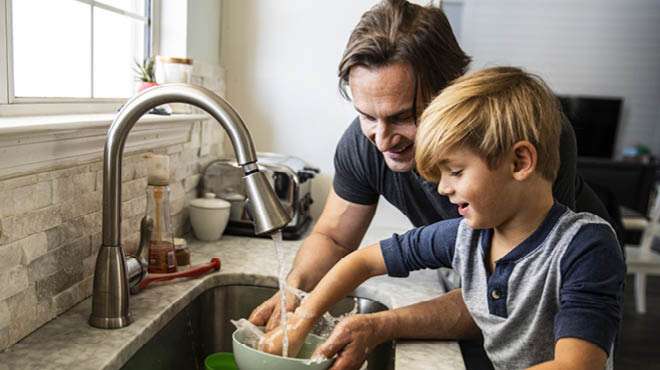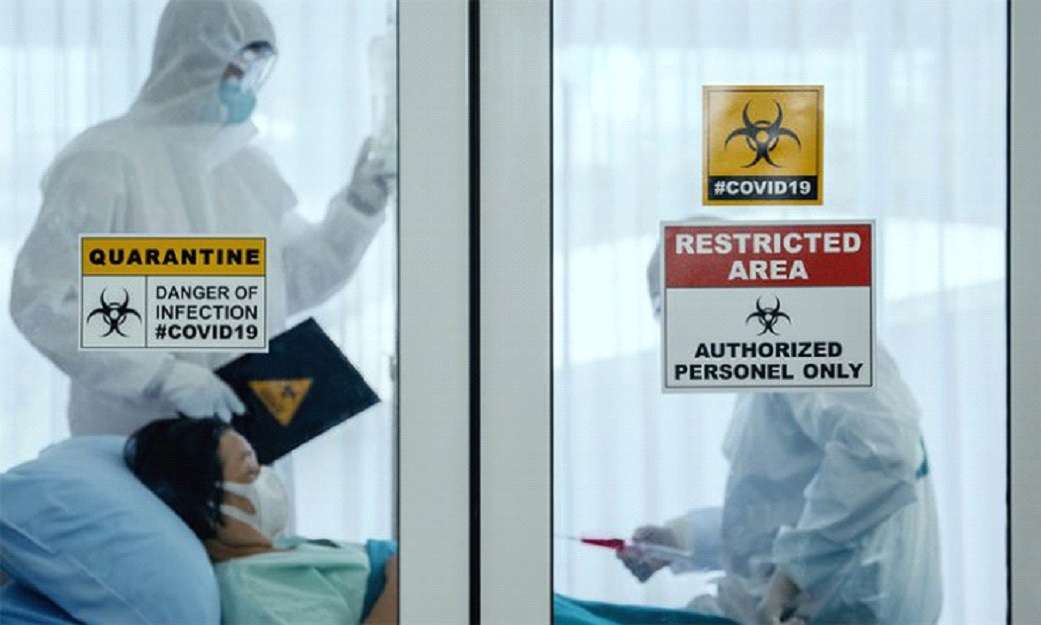Does your child have difficulty focusing on an activity or seem impulsive in behavior? When symptoms are severe enough and cause ongoing problems in more than one area of your child’s life, it could be a sign of a neurobehavioral disorder, such as ADHD.
Attention-deficit/hyperactivity disorder (ADHD) is a chronic condition that affects millions of children and often continues into adulthood. ADHD includes a combination of persistent problems, such as difficulty sustaining attention, hyperactivity and impulsive behavior.
Children with ADHD also may struggle with low self-esteem, school anxiety, troubled relationships and poor performance in school. Symptoms sometimes lessen with age. However, some people never completely outgrow their ADHD symptoms. However, they can learn strategies to be successful.
ADHD subtypes
- Inattentive ADHD
Formerly referred to as ADD, people with inattentive ADHD display symptoms of inattention, but do not possess symptoms of hyperactivity or impulsivity. - Hyperactive/Impulsive ADHD
This subset of ADHD display symptoms of impulsivity or hyperactivity, but do not display symptoms of inattention. - Combined
People with combined ADHD display symptoms of inattention, hyperactivity and impulsivity. The is the most common subset of ADHD.
Learn more about the three different types of ADHD.
Gender differences with ADHD
ADHD is more commonly diagnosed in boys than girls, but research into ADHD in adulthood suggests an almost equal balance between men and women. A lower diagnosis rate among females in childhood can result because girls with ADHD are more likely than boys to have the inattentive form of ADHD and less likely to show obvious problems.
More than half of children who experience ADHD in childhood continue to have symptoms as adults. Some women only recognize their ADHD after a child has been diagnosed and the woman begins to see similar behavior in herself. Other women seek treatment because their lives spin out of control, financially, at work or at home.
ADHD treatment
While treatment won’t cure ADHD, it can help a great deal with symptoms. Treatment typically involves medications and behavioral interventions. Early diagnosis and treatment can make a big difference in outcome.
It’s also important to work with a therapist who specializes in ADHD to learn coping mechanisms that are nonpharmacological to help with ADHD symptoms and behaviors. A therapist can enhance the effectiveness of the medication and give tools to empower those with ADHD using treatments that may involve behavioral, psychological, social, educational and lifestyle interventions.
Behavioral strategies
Here are 5 behavioral strategies to help manage your child’s ADHD:
1. Give praise and rewards when rules are followed.
Children with ADHD often receive and expect criticism more so than other children. This can really impact self-esteem. Some days, you might have to really look for the good behavior, but you should praise good behavior at least five times more often than you criticize bad behavior.
2. Give clear, effective directions or commands.
Make eye contact or gently touch on arm or shoulder to get his or her attention. Give brief, simple steps and short commands that get to the point rather than multiple directions or wordy statements and questions.
3. Establish healthy habits.
If your child is on a medication, it should be taken as prescribed. Contact your child’s health care provider if problems arise. Make sure your child is getting enough sleep, eating a well-balanced diet consisting of three meals, a snack and adequate fluids daily, and has an outlet for some form of daily exercise. These healthy habits will help your child to feel his or her best and help minimize ADHD symptoms.
4. Develop routines around homework and chores.
Work together to make a checklist of what needs to be done surrounding daily chores, getting ready for bed and school for your child to refer to when he or she gets off task. Encourage your child to use a daily planner so he or she is aware of all homework assignments. Have an established time and location for homework, and use a timer to remind your child to show you how the homework is going two to four times per hour. Factor in brain breaks if your child needs them and movement between tasks or use of an appropriate fidget.
5. Help your child build relationships, strong social skills and maintain friendships.
Be a good role model of behavior you want your child to use. Factor in some special time three to five days a week with your child that is conflict-free and does not involve a screen to help maintain a strong parent-child relationship. Help your child develop at least one close friendship. With younger children, parents may need to take the lead to arrange and host play dates or get kids involved in activities where there are kids the same age. Get tips for helping your child develop social skills.
Amanda Logan is a nurse practitioner in Family Medicine in Janesville, Minnesota.

Share on Pinterest
Kristen Curette & Daemaine Hines/Stocksy United
Parenting tips for ADHD
Raising a child with ADHD isn’t like traditional childrearing. Normal rule-making and household routines can become almost impossible, depending on the type and severity of your child’s symptoms, so you’ll need to adopt different approaches. It can become frustrating to cope with some of the behaviors which result from your child’s ADHD, but there are ways to make life easier.
Parents must accept the fact that children with ADHD have functionally different brains from those of other children. While children with ADHD can still learn what is acceptable and what isn’t, their disorder does make them more prone to impulsive behavior.
Fostering the development of a child with ADHD means that you will have to modify your behavior and learn to manage the behavior of your child. Medication may be the first step in your child’s treatment. Behavioral techniques for managing a child’s ADHD symptoms must always be in place. By following these guidelines, you can limit destructive behavior and help your child overcome self-doubt.
Principles of behavior management therapy
There are two basic principles of behavior management therapy. The first is encouraging and rewarding good behavior (positive reinforcement). The second is removing rewards by following bad behavior with appropriate consequences, leading to the extinguishing of bad behavior (punishment, in behaviorist terms). You teach your child to understand that actions have consequences by establishing rules and clear outcomes for following or disobeying these rules. These principles must be followed in every area of a child’s life. That means at home, in the classroom, and in the social arena.
Decide ahead of time which behaviors are acceptable and which are not
The goal of behavioral modification is to help your child consider the consequences of an action and control the impulse to act on it. This requires empathy, patience, affection, energy, and strength on the part of the parent. Parents must first decide which behaviors they will and won’t tolerate. It’s crucial to stick to these guidelines. Punishing a behavior one day and allowing it the next is harmful to a child’s improvement. Some behaviors should always be unacceptable, like physical outbursts, refusal to get up in the morning, or unwillingness to turn off the television when told to do so.
Your child may have a hard time internalizing and enacting your guidelines. Rules should be simple and clear, and children should be rewarded for following them. This can be accomplished using a points system. For example, allow your child to accrue points for good behavior that can be redeemed for spending money, time in front of the TV, or a new video game. If you have a list of house rules, write them down and put them where they’re easy to see. Repetition and positive reinforcement can help your child better understand your rules.
Define the rules, but allow some flexibility
It’s important to consistently reward good behaviors and discourage destructive ones, but you shouldn’t be too strict with your child. Remember that children with ADHD may not adapt to change as well as others. You must learn to allow your child to make mistakes as they learn. Odd behaviors that aren’t detrimental to your child or anyone else should be accepted as part of your child’s individual personality. It’s ultimately harmful to discourage a child’s quirky behaviors just because you think they are unusual.
Manage aggression
Aggressive outbursts from children with ADHD can be a common problem. “Time-out” is an effective way to calm both you and your overactive child. If your child acts out in public, they should be immediately removed in a calm and decisive manner. “Time-out” should be explained to the child as a period to cool off and think about the negative behavior they have exhibited. Try to ignore mildly disruptive behaviors as a way for your child to release his or her pent-up energy. However, destructive, abusive, or intentionally disruptive behavior which goes against the rules you establish should always be punished.
Other “do’s” for coping with ADHD
Create structure
Make a routine for your child and stick to it every day. Establish rituals around meals, homework, playtime, and bedtime. Simple daily tasks, such as having your child lay out his or her clothes for the next day, can provide essential structure.
Break tasks into manageable pieces
Try using a large wall calendar to help remind a child of their duties. Color coding chores and homework can keep your child from becoming overwhelmed with everyday tasks and school assignments. Even morning routines should be broken down into discrete tasks.
Simplify and organize your child’s life
Create a special, quiet space for your child to read, do homework, and take a break from the chaos of everyday life. Keep your home neat and organized so that your child knows where everything goes. This helps reduce unnecessary distractions.
Limit distractions
Children with ADHD welcome easily accessible distractions. Television, video games, and the computer encourage impulsive behavior and should be regulated. By decreasing time with electronics and increasing time doing engaging activities outside the home, your child will have an outlet for built-up energy.
Encourage exercise
Physical activity burns excess energy in healthy ways. It also helps a child focus their attention on specific movements. This may decrease impulsivity. Exercise may also help to improve concentration, decrease the risk for depression and anxiety, and stimulate the brain in healthy ways. Many professional athletes have ADHD. Experts believe that athletics can help a child with ADHD find a constructive way to focus their passion, attention, and energy.
Regulate sleep patterns
Bedtime may be an especially difficult for children suffering from ADHD. Lack of sleep exacerbates inattention, hyperactivity, and recklessness. Helping your child get better sleep is important. To help them get better rest, eliminate stimulants like sugar and caffeine, and decrease television time. Establish a healthy, calming bedtime ritual.
Encourage out-loud thinking
Children with ADHD can lack self-control. This causes them to speak and act before thinking. Ask your child to verbalize their thoughts and reasoning when the urge to act out arises. It’s important to understand your child’s thought process in order to help him or her curb impulsive behaviors.
Promote wait time
Another way to control the impulse to speak before thinking is to teach your child how to pause a moment before talking or replying. Encourage more thoughtful responses by helping your child with homework assignments and asking interactive questions about a favorite television show or book.
Believe in your child
Your child likely doesn’t realize the stress that their condition can cause. It’s important to remain positive and encouraging. Praise your child’s good behavior so they know when something was done right. Your child may struggle with ADHD now, but have confidence in your child and be positive about their future.
Find individualized counseling
You can’t do it all. Your child needs your encouragement, but they also need professional help. Find a therapist to work with your child and provide another outlet for them. Don’t be afraid to seek assistance if you need it. Many parents are so focused on their children that they neglect their own mental needs. A therapist can help manage your stress and anxiety as well as your child’s. Local support groups may also be a helpful outlet for parents.
Take breaks
You can’t be supportive 100 percent of the time. It’s normal to become overwhelmed or frustrated with yourself or your child. Just as your child will need to take breaks while studying, you’ll need your own breaks as well. Scheduling alone time is important for any parent. Consider hiring a babysitter. Good break options include:
- going for a walk
- going to the gym
- taking a relaxing bath
Calm yourself
You can’t help an impulsive child if you yourself are aggravated. Children mimic the behaviors they see around them, so if you remain composed and controlled during an outburst, it will help your child to do the same. Take time to breathe, relax, and collect your thoughts before attempting to pacify your child. The calmer you are, the calmer your child will become.
“Don’ts” for dealing with an ADHD child
Don’t sweat the small stuff
Be willing to make some compromises with your child. If your child has accomplished two of the three chores you assigned, consider being flexible with the third, uncompleted task. It’s a learning process and even small steps count.
Don’t get overwhelmed and lash out
Remember that your child’s behavior is caused by a disorder. ADHD may not be visible on the outside, but it’s a disability and should be treated as such. When you begin to feel angry or frustrated, remember that your child can’t “snap out of it” or “just be normal.”
Don’t be negative
It sounds simplistic, but take things one day at a time and remember to keep it all in perspective. What is stressful or embarrassing today will fade away tomorrow.
Don’t let your child or the disorder take control
Remember that you are the parent and, ultimately, you establish the rules for acceptable behavior in your home. Be patient and nurturing, but don’t allow yourself to be bullied or intimidated by your child’s behaviors.




